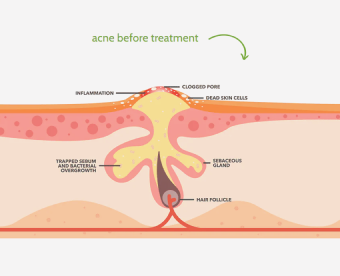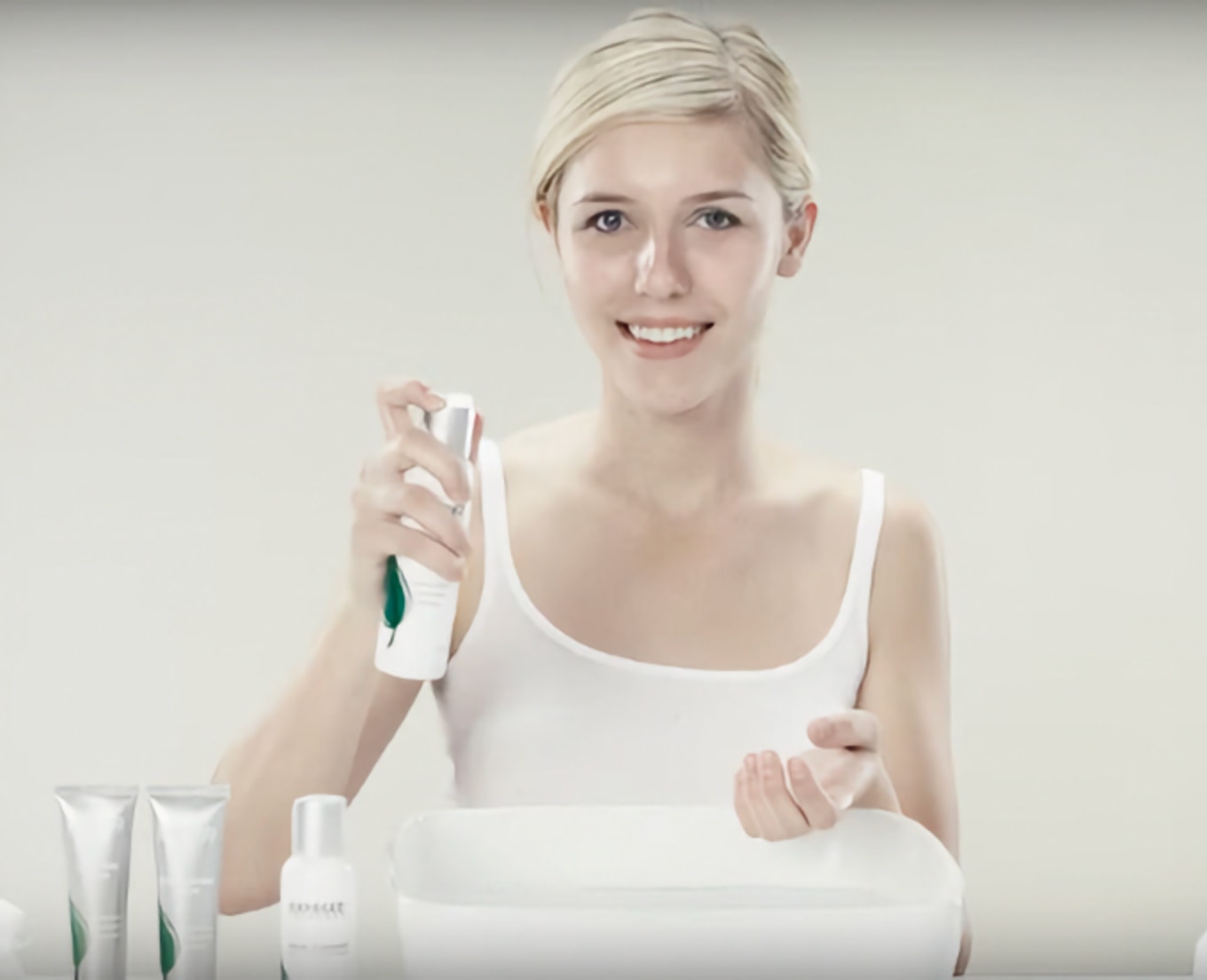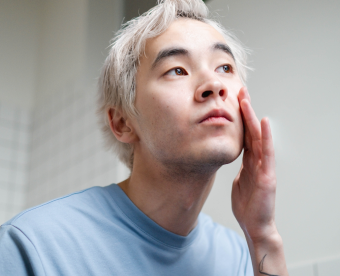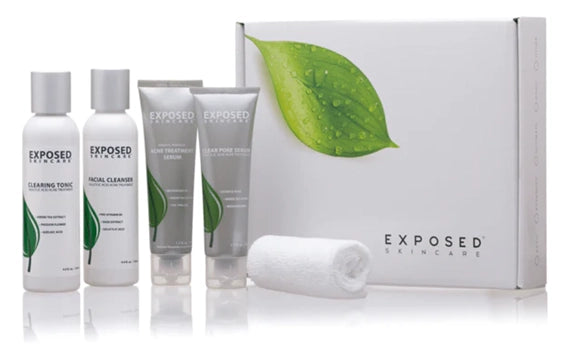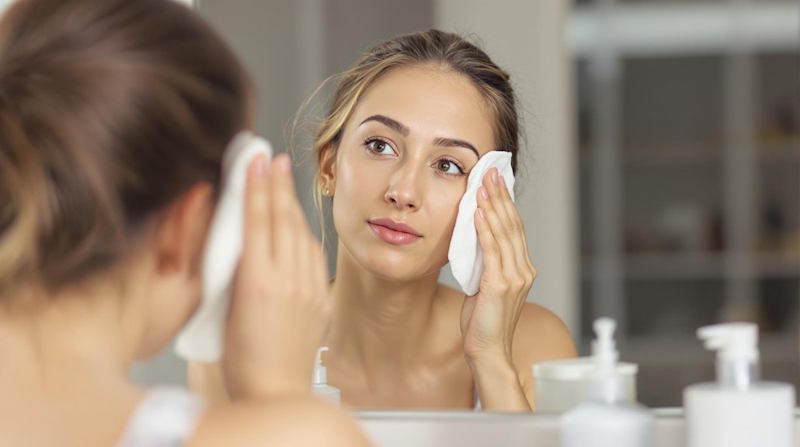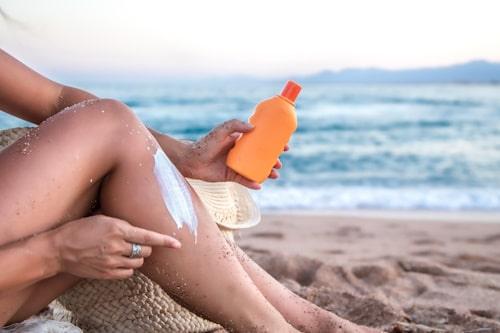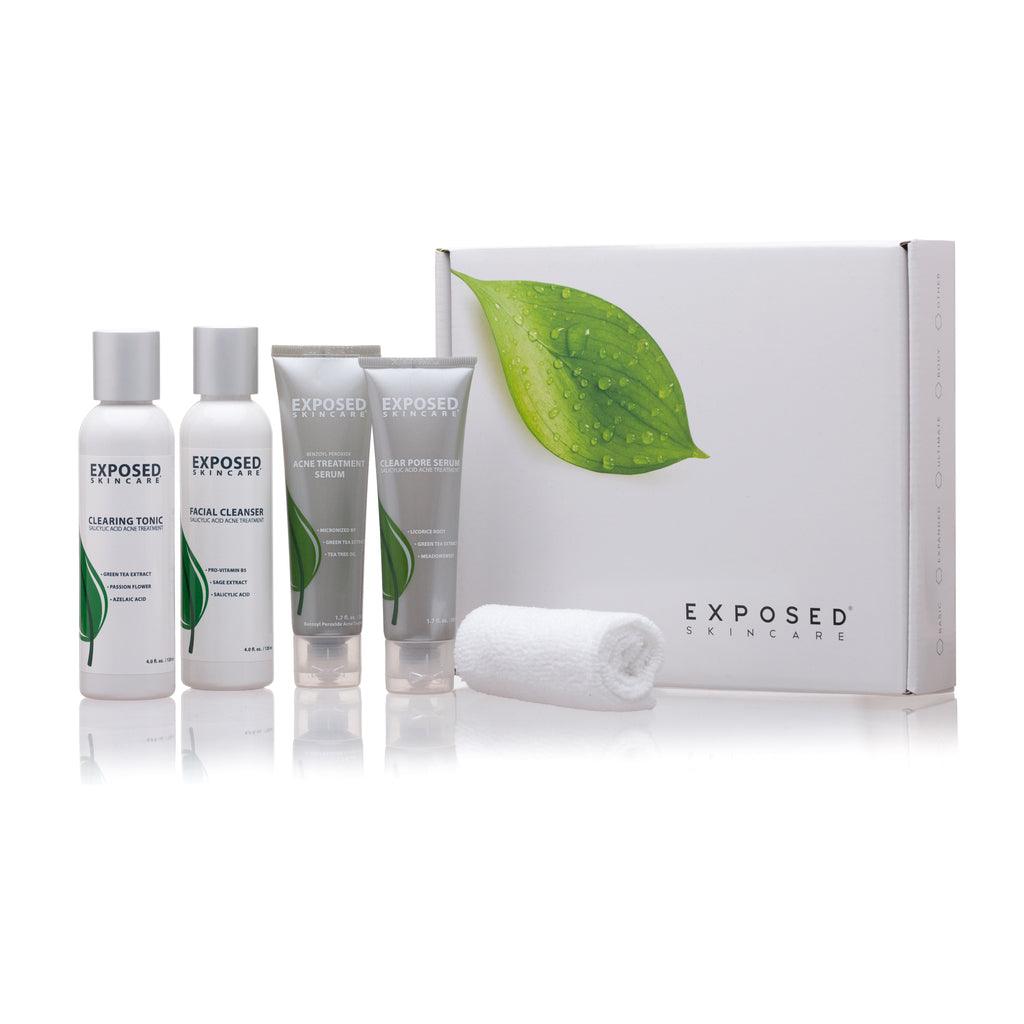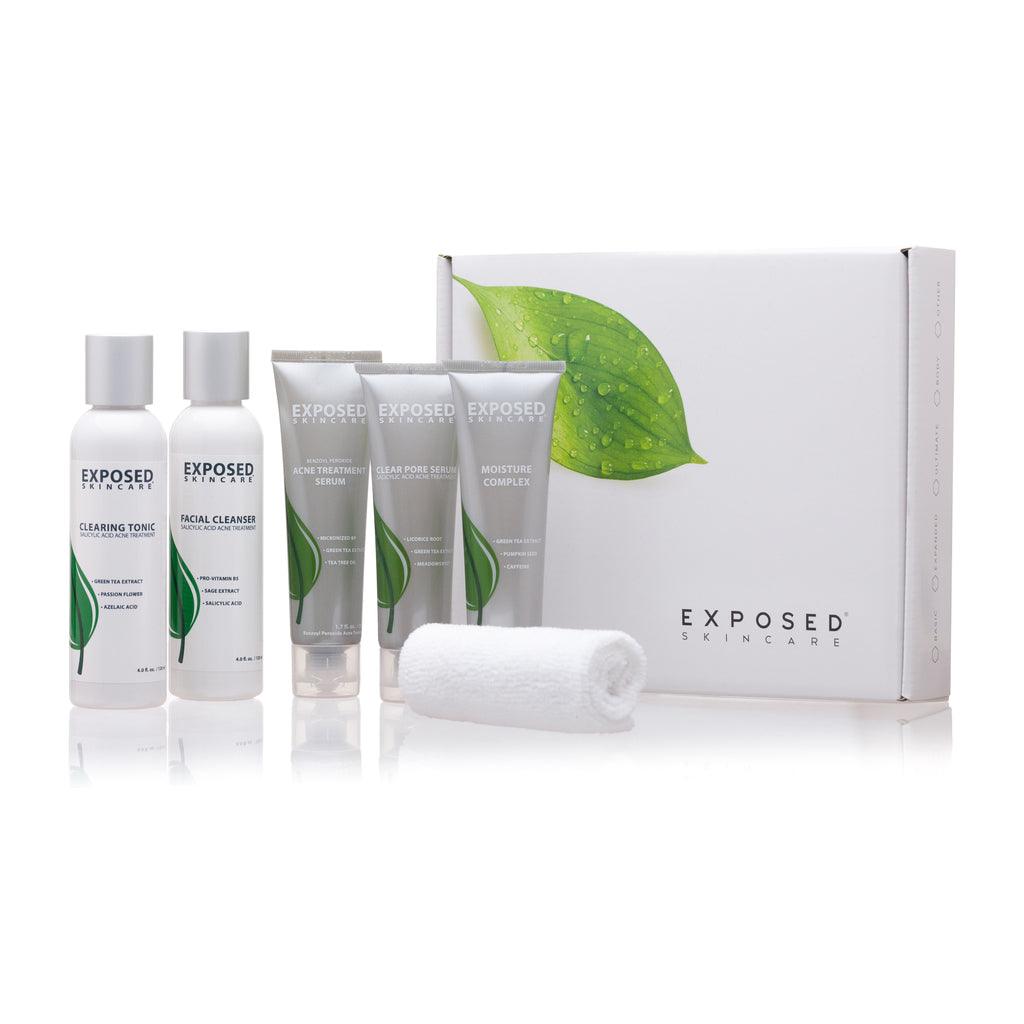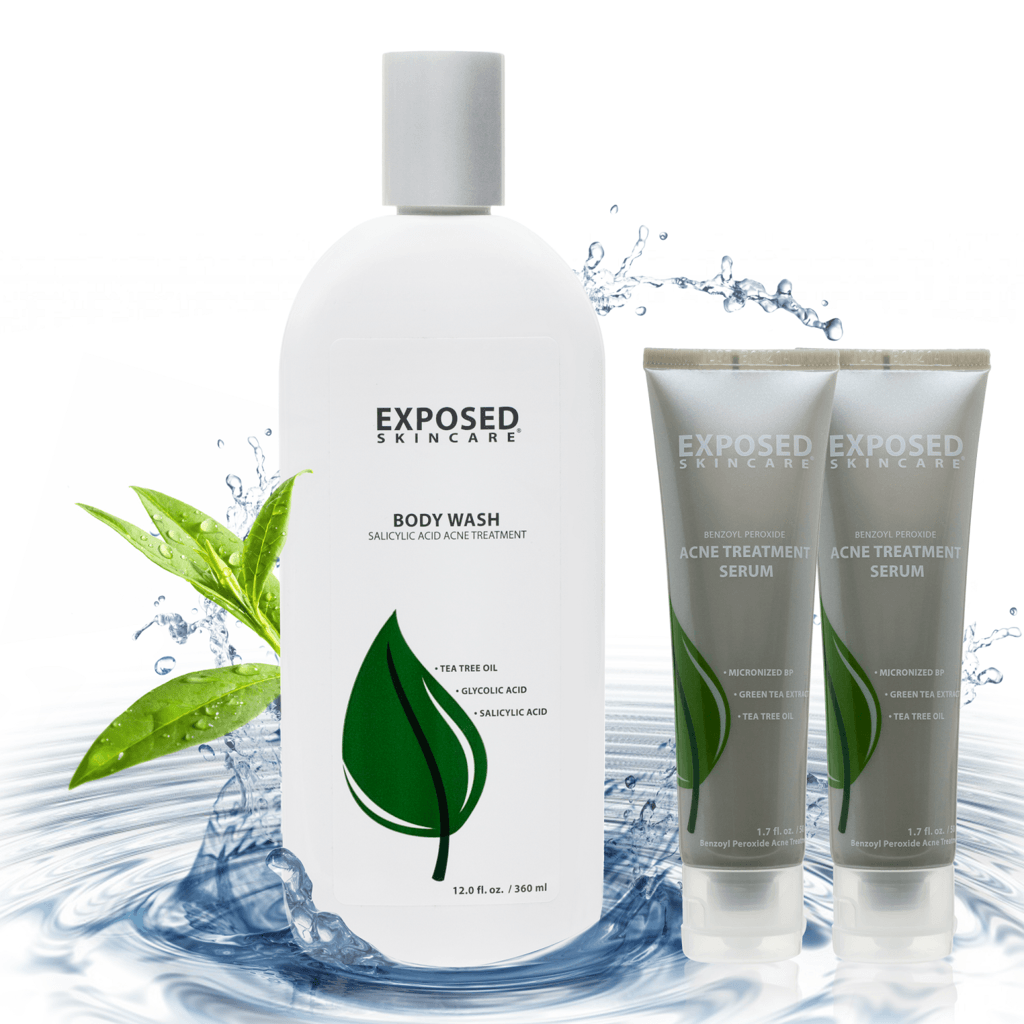Breaking the acne-picking cycle isn't just about willpower—it's about fixing what drives you to pick in the first place. Exposed's system tackles all four acne drivers (excess oil, dead skin, bacteria, inflammation) while most treatments only worsen the pick-damage-regret loop. Their Complete Kit combines acne-fighting ingredients with soothing compounds that calm irritation. Pair this with practical techniques like keeping nails short and using hydrocolloid patches, and you'll find your fingers wandering to your face much less often.
Biggest Takeaways
-
Exposed's system tackles all four acne drivers simultaneously, reducing visible blemishes that trigger picking behavior.
-
Pairing Exposed skincare with hydrocolloid patches creates physical barriers to prevent skin damage during picking urges.
-
Establishing a consistent skincare routine with Exposed helps break the pick-damage-regret cycle by improving skin condition.
-
Soothing ingredients in Exposed products calm inflammation, reducing irritation that often leads to compulsive touching and picking.
-
Exposed's one-year guarantee allows time to establish habit-changing routines and see skin improvements that decrease picking urges.
What Drives Skin Picking: The Psychology Behind Dermatillomania

While you might think your acne-picking habit is just a bad quirk, it could actually be dermatillomania—a real psychological condition with deep roots. This isn't just you being fidgety—roughly 2% of Americans struggle with this, mostly women in their early twenties.
Learning how to stop picking acne starts with understanding what's driving it. Your brain's basically running on autopilot during those picking sessions, whether you're zoning out during Netflix or deliberately hunting down that one stubborn pimple.
It's often triggered by anxiety, OCD tendencies, boredom, or just spotting an imperfection that sends you spiraling.
The kicker? This isn't just about willpower. That shame cycle of pick-damage-regret-repeat has legitimate psychological hooks that might need professional help like CBT or even medication to address.
Why Most Acne Treatments Actually Make Picking Worse
The very acne treatments you're slathering on your face might actually be fueling your picking habit—talk about self-sabotage!
Ironic, isn't it? Your acne solutions could be the silent accomplice to your destructive picking habit.
Those harsh, alcohol-loaded formulas strip your skin's moisture barrier, creating that tight, flaky mess you can't help but pick at.
Ever notice how your skin feels like sandpaper after using that "miracle" benzoyl peroxide spot treatment?
That's because most brands only target bacteria while ignoring the other acne drivers, leaving you with irritated patches that practically beg for your fingertips.
And let's be honest—when you've dropped serious cash on products that keep failing, the frustration alone can trigger a picking session.
It's a vicious cycle: ineffective treatment → visible breakouts → anxiety → picking → more breakouts → repeat.
The Four-Driver Approach: Why Exposed Works to Clear Acne

Breaking the picking cycle starts with understanding why your current spot treatments keep failing you. It's not your fault—most products only target one acne driver while ignoring the other three.
Here's the truth: acne stems from four interconnected culprits—excess oil, dead skin buildup, bacteria, and inflammation. That zit you can't stop touching? It's the product of all four working together.
Exposed's system tackles this head-on with ingredients that hit all bases simultaneously. Salicylic acid and benzoyl peroxide clear the gunk and kill bacteria, while soothing green tea and aloe calm that "pick me now" inflammation.
Users report not just clearer skin within weeks, but dramatically reduced urges to pick. When your acne's actually healing (not just temporarily suppressed), your fingers finally get the message to back off.
5 Practical Techniques to Break the Picking Cycle
Struggling to keep your hands off your face? You're not alone in this battle. Breaking the pick-fest cycle requires more than just willpower—it's about strategic defense.
Try these battle-tested techniques: Keep those nails short and slap on hydrocolloid patches as your skin's personal bodyguards.
Your skin deserves armor. Short nails and hydrocolloid patches create a powerful defense system against picking urges.
When anxiety kicks in, redirect that nervous energy to fidget toys instead of your pores.
CBT approaches work wonders by helping you spot your triggers before you're five minutes deep in a mirror session. Pair this with mindfulness practices to catch yourself in the act.
The real game-changer? A consistent skincare routine. When your skin's getting proper care, you'll feel less tempted to perform DIY extractions that only make things worse.
How Exposed's Complete Kit Reduces Picking Temptation

When your fingers constantly find their way to your face for a "quick fix" that leaves you with bloody spots and regret, you're trapped in a vicious cycle that needs more than just willpower to break.
This is where Exposed's Complete Kit comes in clutch. It's not another overhyped miracle solution—it's a strategic system that fights what actually makes you pick: visible blemishes and irritated skin.
The kit's benzoyl peroxide and salicylic acid tag-team your breakouts, while soothing ingredients like green tea and aloe calm the inflammation that screams "pick me!"
By creating a consistent routine with products that actually work together, you're not just treating acne—you're removing the temptation to pick in the first place.
The result? Fewer spots to obsess over, less irritation, and finally, a chance to break free.
Real Results: Before and After Success Stories
The proof is in the pores—literally. Scroll through the Exposed community and you'll spot countless before/after pics that'll make you do a double-take. These aren't those suspiciously perfect Instagram transformations—they're real people who've ditched their picking habit and watched their skin transform.
"I stopped feeling like I needed to hide my face after just three weeks," shares Maya, whose post-inflammatory marks faded dramatically after switching to the complete kit.
What's striking isn't just the clearer complexions but the confidence boost. Users report feeling less anxious about their appearance and—crucially—experiencing fewer urges to pick as their skin smoothed out.
When your mirror shows improvement rather than imperfections, your fingers naturally find less to fixate on.
Creating Your Daily Anti-Picking Routine With Exposed
Breaking the pick-cycle requires more than willpower—it demands a strategic approach that tackles both your skin issues and habits simultaneously.
Ending the picking habit means treating both the skin and the behavior—willpower alone won't cut it.
The real game-changer? A consistent routine with Exposed products that actually work.
Start with their gentle cleanser morning and night to remove triggers without stripping your skin bare.
Then apply their targeted serums—the Daytime formula fights bacteria while the Nighttime version keeps pores clear while you sleep.
For those can't-resist spots, slap on one of Exposed's hydrocolloid patches—they're like little "do not touch" barriers that heal blemishes while blocking your fingers.
Finish with their non-greasy moisturizer and SPF to protect healing skin.
Your hands will have nothing to pick at when your face is finally clear!
The One-Year Guarantee: Breaking Free From Picking Risk-Free
Most acne sufferers have tried everything—the home remedies, the drugstore "miracle" products, even prescription treatments—only to watch their money disappear along with their hope.
That's why Exposed's one-year guarantee is a legit game-changer. While other brands give you a measly 30 days then ghost you, Exposed backs their system for a full year. You're literally trying it risk-free.
Why does this matter for your picking habit? Because healing takes time. The guarantee gives you breathing room to establish a consistent routine without stressing about wasted cash.
When your skin starts clearing (which happens way faster than you'd think), the urge to pick naturally fades.
No more throwing money at products that don't deliver. No more desperate picking sessions. Just results—or your money back.
Frequently Asked Questions
How to Stop the Urge to Pick Acne?
You'll overcome picking urges by using hydrocolloid patches as barriers, keeping hands busy with fidget toys, and addressing all four acne drivers with Exposed's complete treatment system.
How to Heal Skin From Picking Acne?
Wounds that whisper "heal me" need your gentle touch. Clean the area, apply a hydrocolloid patch, and gradually introduce Exposed's Clearing Tonic with azelaic acid to brighten those post-pick marks you're battling.
Will My Acne Go Away if I Stop Picking?
Yes, your acne will improve when you stop picking. You'll break the inflammation cycle and let your skin heal naturally, but you'll still need a multi-factor treatment to address all four acne drivers completely.
How to Cover up Picked Acne?
Perfect pore cover-up starts with clean, moisturized skin. Apply green color-corrector, followed by non-comedogenic foundation, then set with powder. You'll feel confident while your picked spots heal underneath.
Putting It All Together
You're at a crossroads with your picking habit—continuing down that bumpy road only leads to more scars and regret. Exposed's system doesn't just talk the talk; it tackles both the urge to pick and the acne that triggers it. Give your skin the fresh start it deserves with a science-backed routine that actually delivers on its promises. What have you got to lose except your blemishes?

